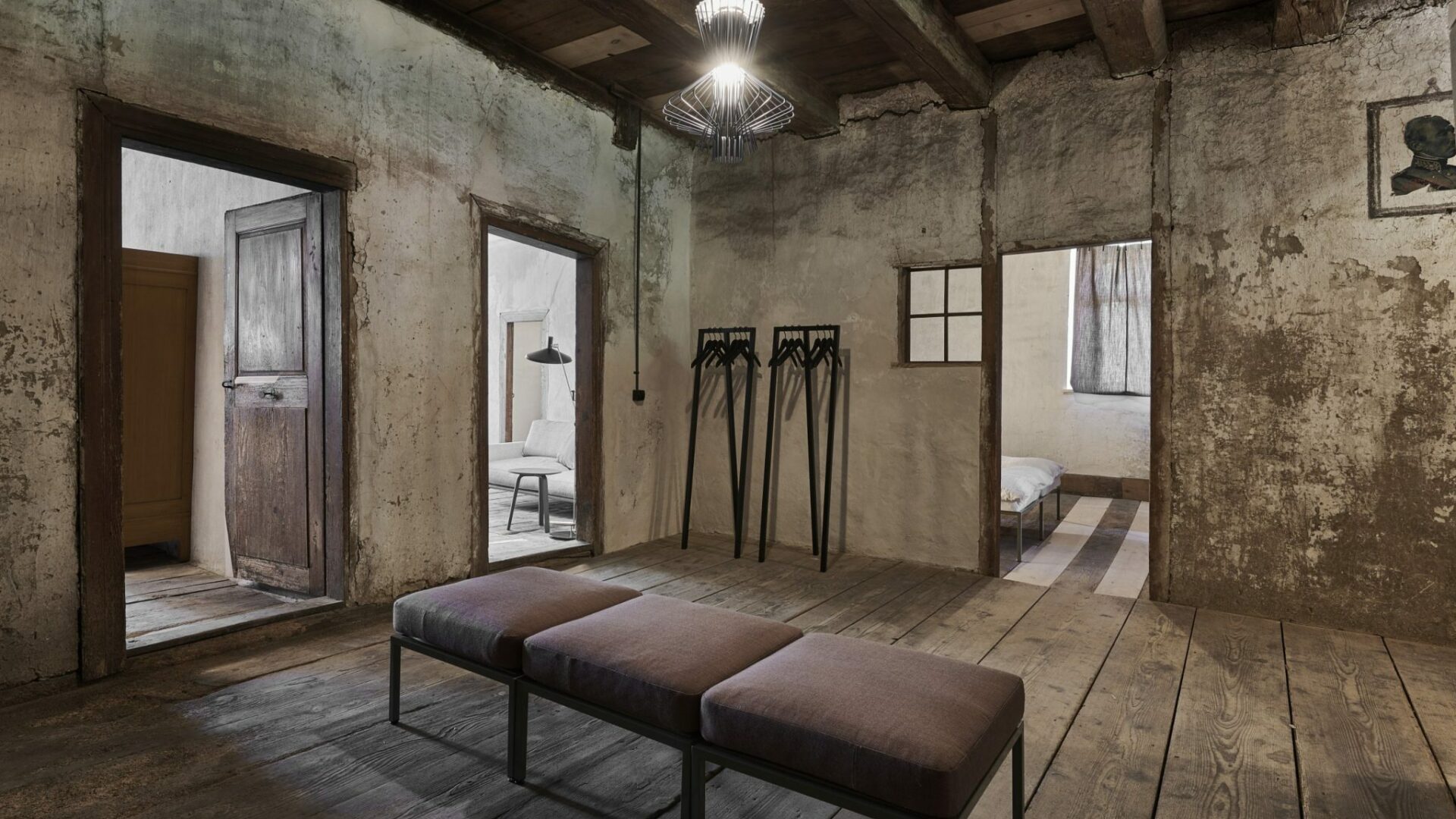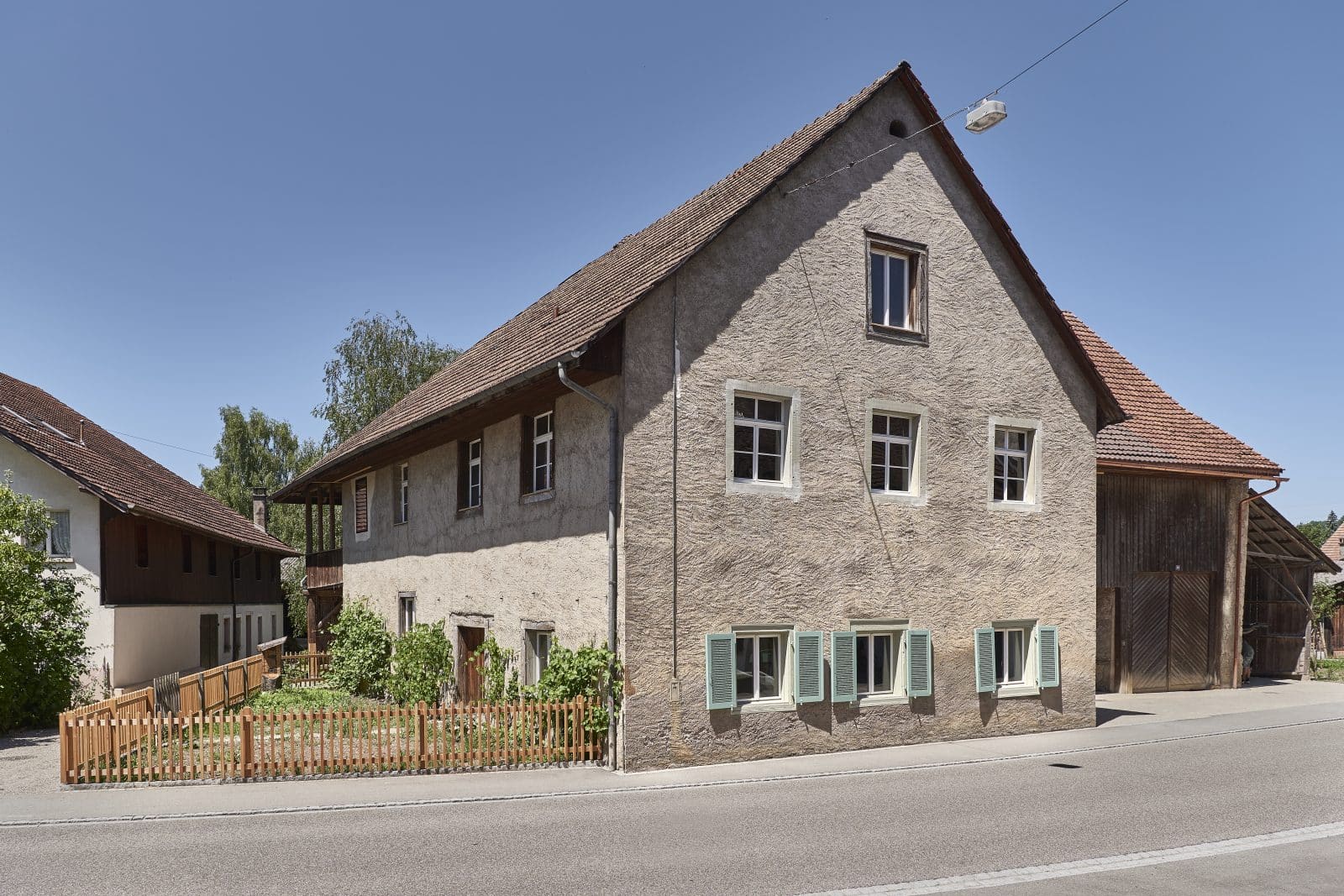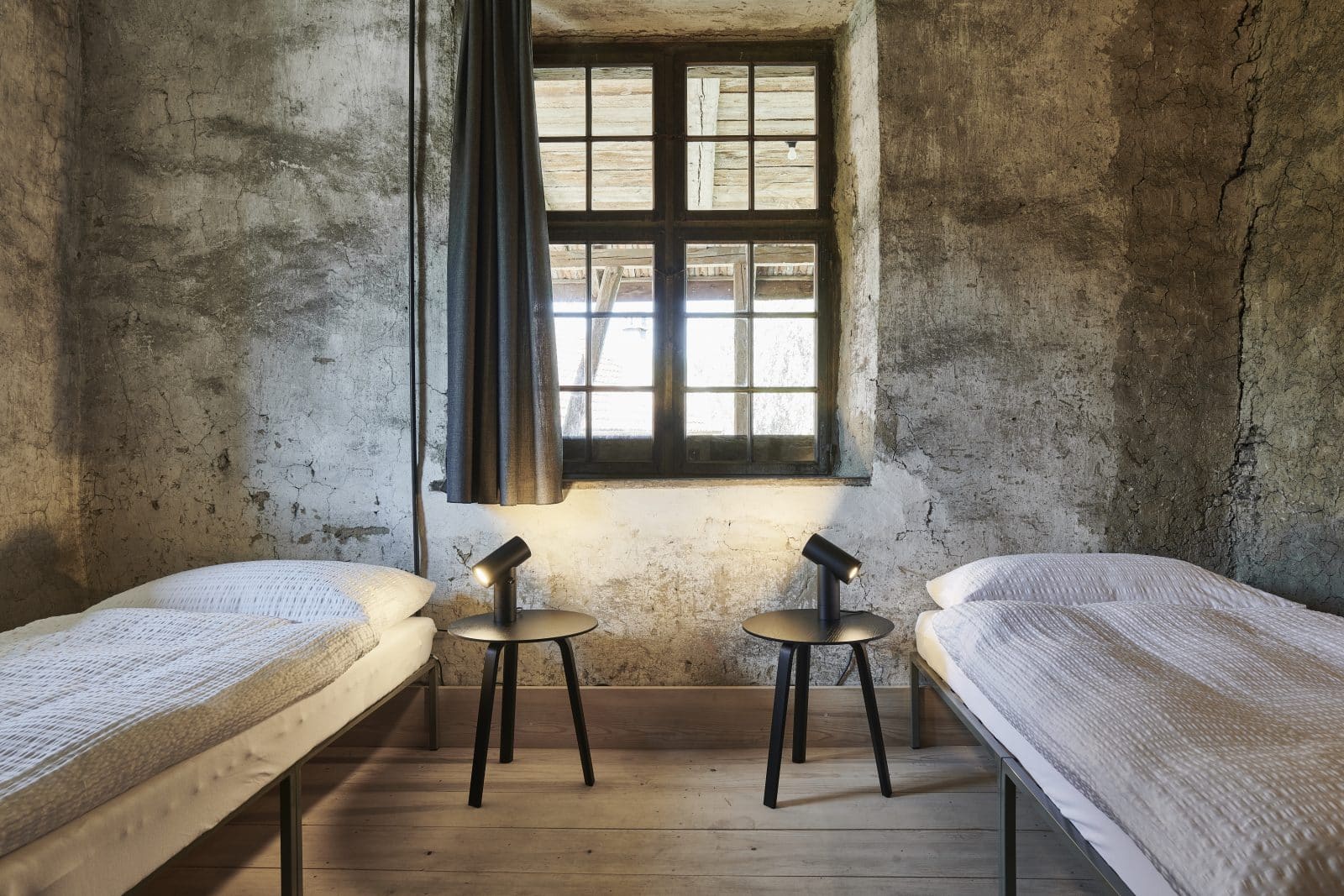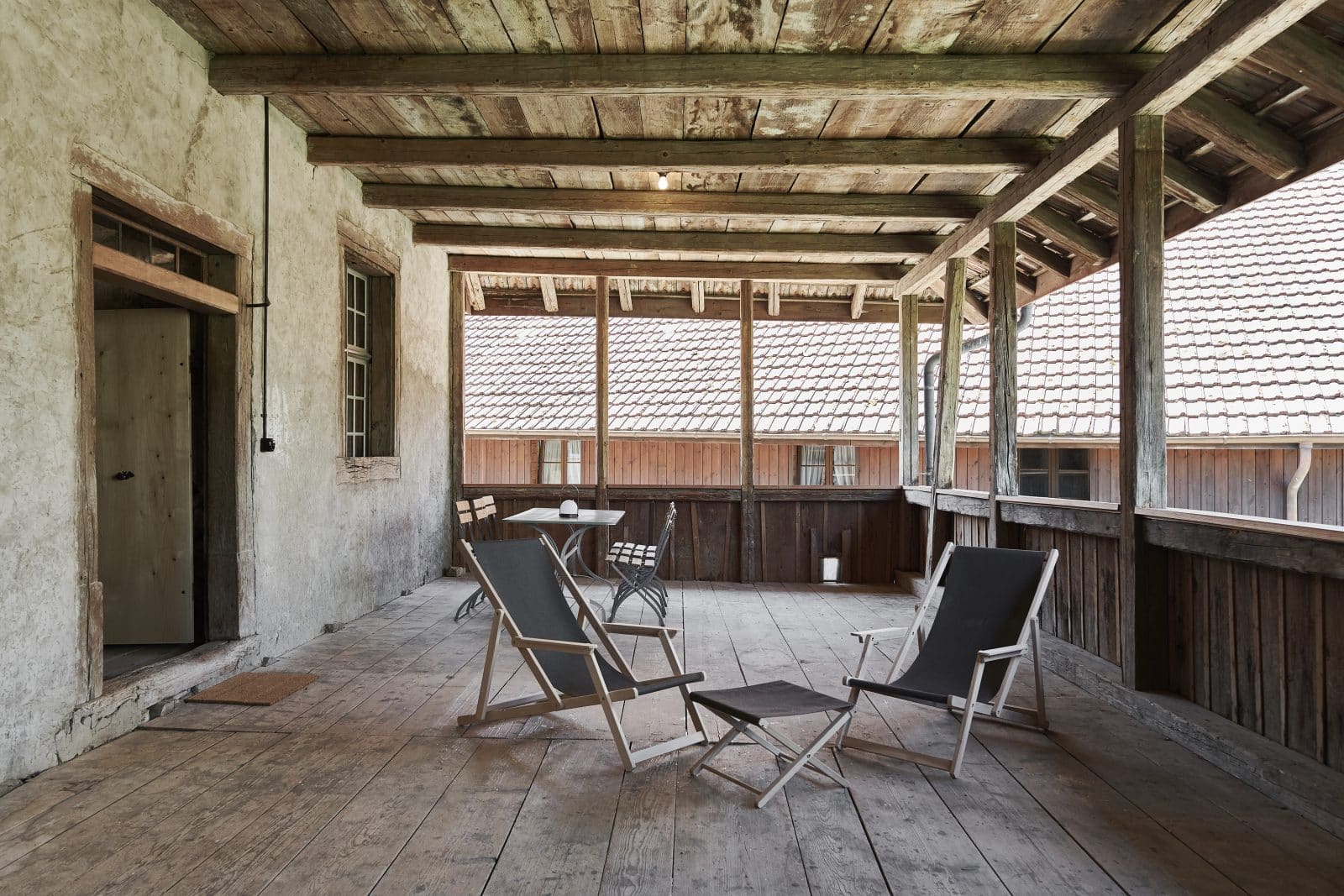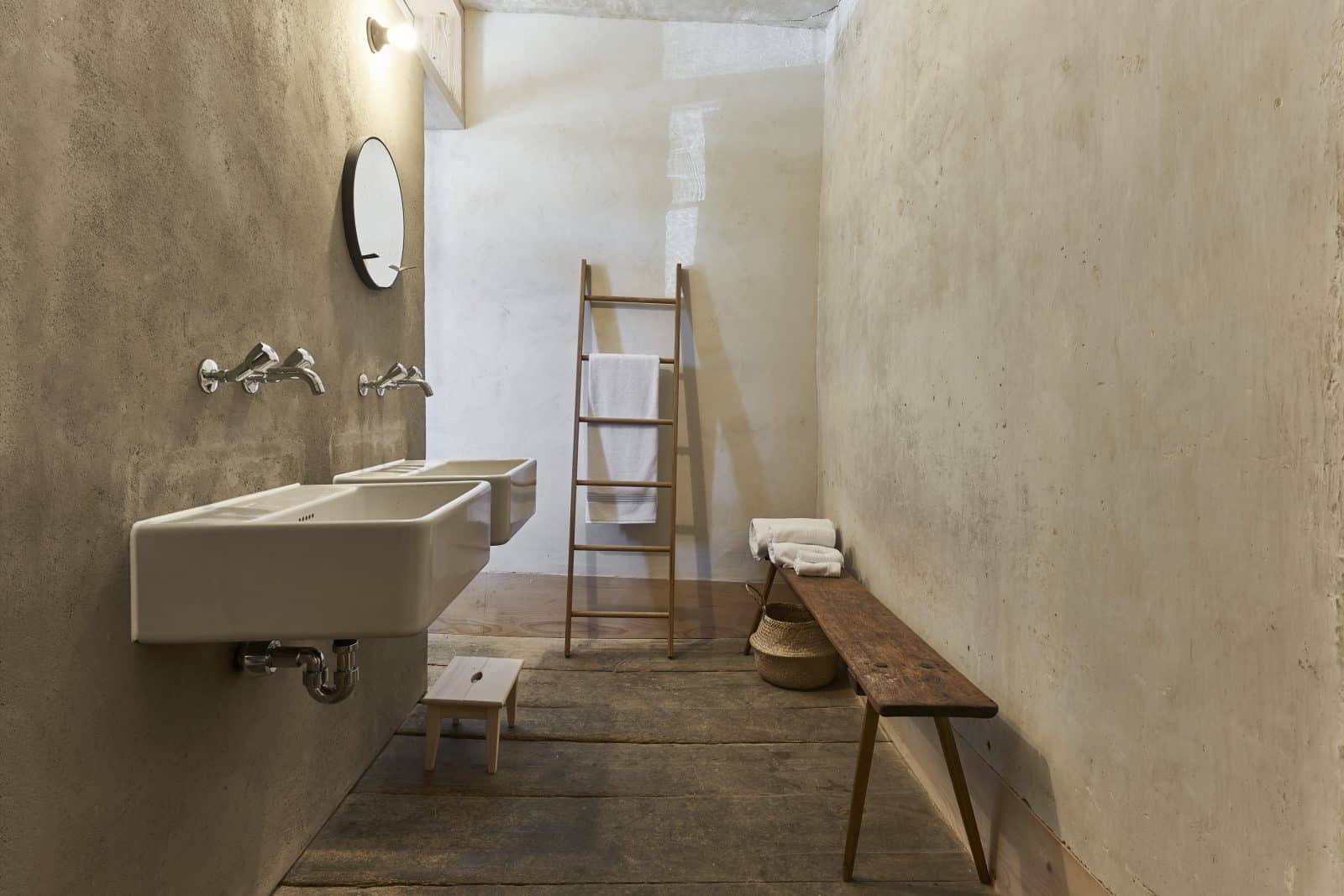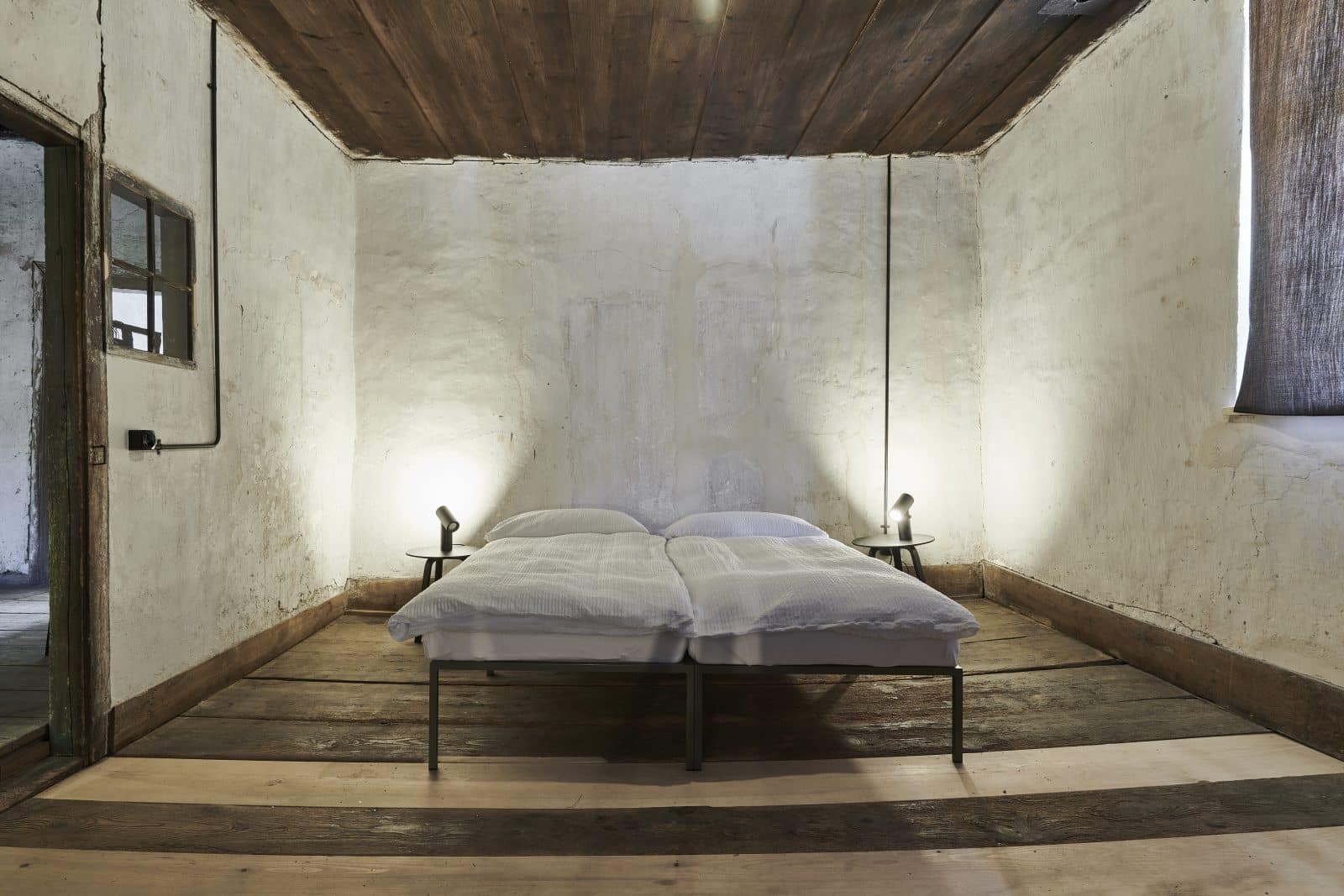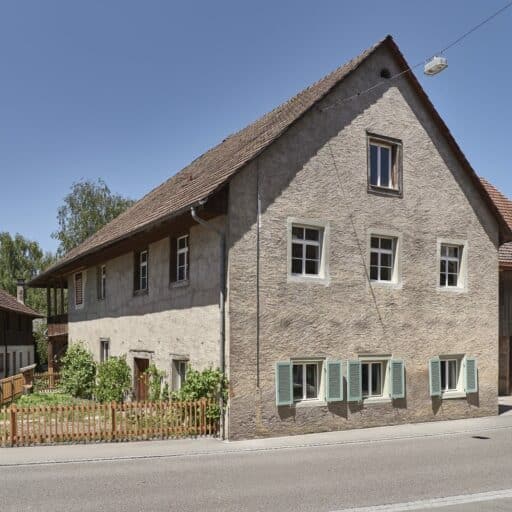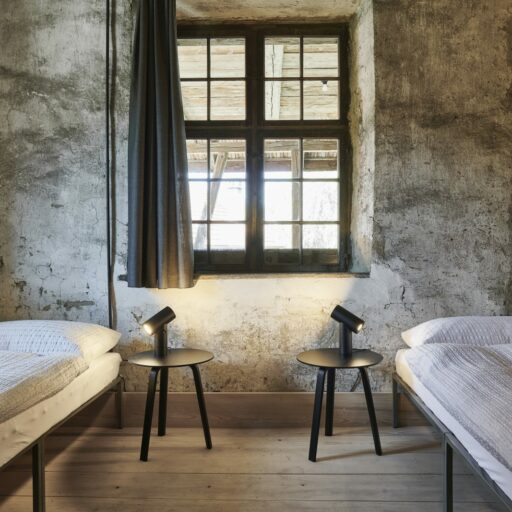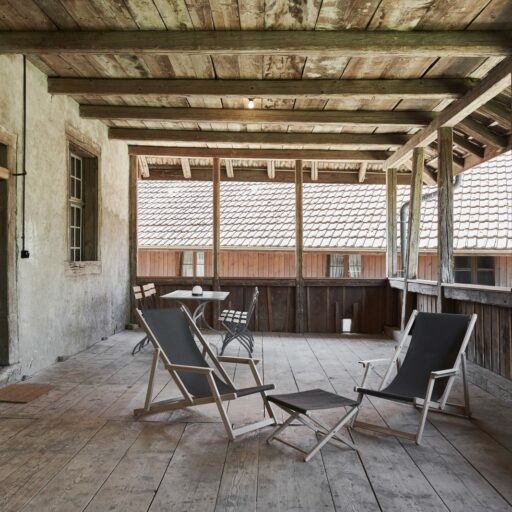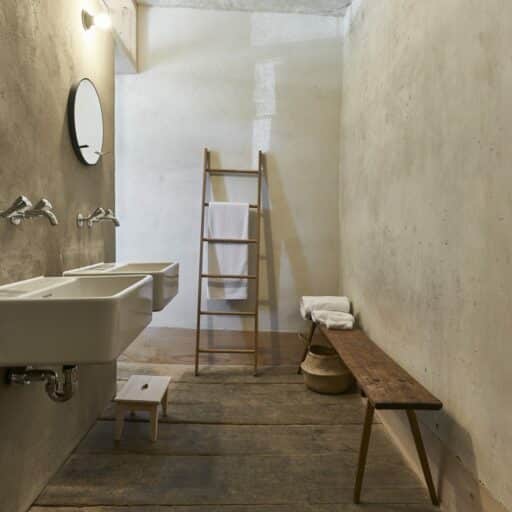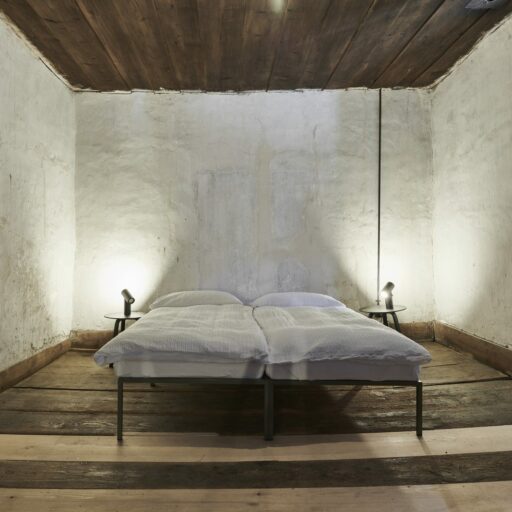Das Flederhaus
This place was made for dancing and partying. The house, which was completed in 1803, was planned as an inn but because the builder ran out of money early on it was never put to this use. Instead, the house with its large entertaining room was used as a farmhouse for a long time and was known in the village as the “old Trotte”. When the last inhabitant of the farmhouse, the Trotten-Miggel, died around the turn of the millennium, the house came into the possession of Pro Natura Aargau and the Stiftung Ferien im Baudenkmal took over the rights of use. A new life began for the old Trotte: In the residential part of the building, guests were finally to be welcomed, and in the other part—bats. Bats? Yes really, bats! The greater horseshoe bat is threatened with extinction and because it has suffered from a “housing shortage”, a refuge was set up for it in the attic of the house. Here it can hibernate and raise its offspring in the summer. The surrounding area has also been designed to be bat-friendly, with a pond and low trees, so that in the evening you can witness a very special spectacle—the nocturnal dance of the greater horseshoe bat on the hunt. But back to the Trotte: In the residential part of the house, a “vacation in a listed building” apartment has been set up. The cooperation between regional craftsmen and designers has created what at first seems incompatible—a mix of the historical with the modern. And so the old Trottenhuus has become the new Flederhaus (Bat House) in the Swiss canton of Aargau, a place where you can experience building and species conservation up close. "old trough" known. When the last inhabitant of the farmhouse, the Trotten-Miggel, died around the turn of the millennium, the house came into the possession of Pro Natura Aargau and the Stiftung Ferien im Baudenkmal took over the usufructuary rights. A new life began for the old Trotte: Guests were to be accommodated in the residential part of the building after all, and in the other part - bats. Bats? Really? Yes! Because the Great Horseshoe Bat is threatened with extinction and especially because it suffers from "housing shortage", a refuge was set up for it in the attic of the house. Here it can hibernate and raise its offspring in summer. The surrounding area has also been designed to be bat-friendly, with a pond and low trees, so that in the evening one can witness a very special spectacle: the nocturnal dance of the greater horseshoe bat on the hunt. But back to the Trotte: in the residential part of the house, a "vacation in a listed building" apartment has been set up. The cooperation with regional craftsmen and designers creates the seemingly incompatible: to be historical and modern at the same time. The old Trottenhuus thus became the new Bat House in the Swiss canton of Aargau, a place where you can experience building culture and species conservation up close.
What we like:
- The building, designed as an inn, has unusually high rooms—the large entrance room was originally intended as a dance floor.
- The cozy, large wood stove in the parlor, which is in use; wood is provided.
- The kitchen is still soot-blackened, you can choose whether to use the historical iron stove and oven or to cook in the contemporary kitchenette—it’s up to you.
- Thanks to the skilled and sensitive renovation by Baumann Lukas Architektur you can still see much of the original building fabric (wooden floors, wall surfaces, doors, windows). Even the walls—woven from wooden canes and filled with clay, were faithfully restored with clay, which was conveniently available after digging the pond in the garden.
- The dining table, kitchen cupboard and a bench are old; all the other furniture has been made by Swiss designers or comes from Swiss craftsmen.
- The large covered arbor and the garden which can and should be enjoyed
- the large covered arbor and the garden can and should be used with pleasure
- The made-to-measure design: Because the old floors were very uneven, the beds and chaise longue were built and adjusted on site by Basel-based metal furniture maker Kunotechnik.
GOOD to know:
- The Flederhaus is located in the village of Wegenstetten, in Jurapark Aargau.
- The landlord is the Stiftung Ferien im Baudenkmal, a non-profit organization of the Swiss Heritage Society, which renovates historically important buildings and rents them out as vacation apartments.
- Children are welcome; baby bed and chair are available on request—however, the house is old and not childproof everywhere. - however the house is old and not childproof everywhere
- One of the three rooms is walk-through room.
- The house can be booked from Easter to October; during holidays, a minimum stay of three days is required.
- When it gets cold the heating is old style, using the big wood burning stove in the living room.
- The original floors are partly uneven and consist of wood and stone—if you don’t want holes in your socks, you should bring slippers.
- You are not allowed to go into the attic to see the bats—even bats need privacy—but a visit to the bat exhibition in the barn is worthwhile.
- To observe the bats, however, you can make yourself comfortable in the garden or in the arbor in the evening. After sunset, they hunt beetles and moths between the fruit trees or above the pond in “shaking flight”. They fly slowly and relatively low, and have a zigzagging flight path with numerous changes of direction and phases of gliding.
- Don’t worry, you don’t have contact with the bats in the house, if you don’t want to meet them you don’t have to.
- The area is perfect for short and long excursions and hikes with magnificent views.
Photos: www.gataric-fotografie.ch
Sleeping arrangements and amenities
- 3 bedrooms for up to 6 guests
- Dogs are welcome
Other Equipment
Rates
Start at 992 € per week
